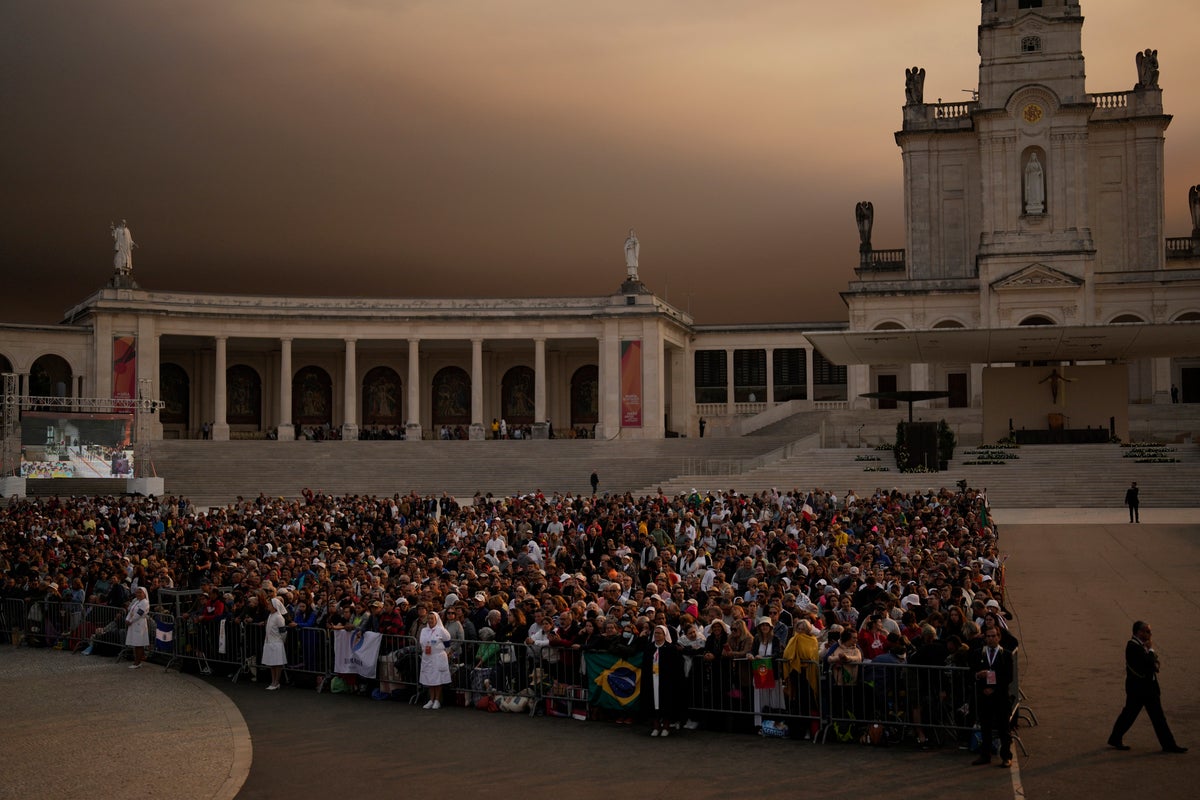
Pope Francis visited the Portuguese town of Fatima on Saturday to pray for peace at a shrine that has captivated Catholics for a century.
The shrine is known for apocalyptic prophesies of hell, peace and Soviet communism that have found new relevance with Russia's war in Ukraine.
Francis was spending the morning at the Fatima shrine, praying with sick people and prisoners, alongside pilgrims who began filling Fatima's central esplanade long before sunrise. As Francis' military helicopter landed at the Fatima helipad, nearby wildfires turned the sky smoky black and sent ash flittering down on the crowd.
The trip is a brief excursion from Lisbon, where Francis has been presiding over World Youth Day celebrations, the big Catholic jamboree that has gathered nearly 1 million young Catholics together. He returns to the Portuguese capital for a Saturday night vigil service and then will preside over a final Mass on Sunday, where the site of the next edition of the faith festival will be announced.
The Fatima story dates back to 1917, when according to tradition, Portuguese siblings Francisco and Jacinta Marto and their cousin Lucia said the Virgin Mary appeared to them six times and confided to them three secrets. The first two described an apocalyptic image of hell, foretold the end of World War I and the start of World War II, and portended the rise and fall of Soviet communism. The children were between 7 and 10 years old.
At the time of the apparitions, Europe was still in the grip of World War I and Portugal’s Catholic Church was facing a crisis after Portugal became a republic in 1910. The republican government introduced a host of anti-clerical laws, including prohibiting religious teaching at schools. In that context, in which priests and bishops were exiled, the visions helped reinvigorate a persecuted church.
In 2000, the Vatican disclosed the long-awaited third secret, describing it as foretelling the May 13, 1981, assassination attempt against St. John Paul II in St. Peter’s Square, which fell on the anniversary of the original vision.
According to later writings by Lucia, who became a nun and died in 2005, Russia would be converted and peace would reign if the pope and all the bishops of the world consecrated Russia to the “Immaculate Heart of Mary.” Lucia later claimed that John Paul fulfilled that prophecy during a 1984 Mass, even though he never specified Russia in the prayer.
Last year, in a prayer for peace following Russia’s invasion of Ukraine, Francis corrected the 1984 omission and consecrated both Russia and Ukraine to Mary.
Francis has made repeated appeals for an end to Russia's war, frequently expressing solidarity with the “martyred” Ukrainian people while refraining from criticizing Russia by name. Recently, he sent an envoy to Kyiv, Moscow and Washington on a mission to try to facilitate the return of Ukrainian children taken to Russia.







